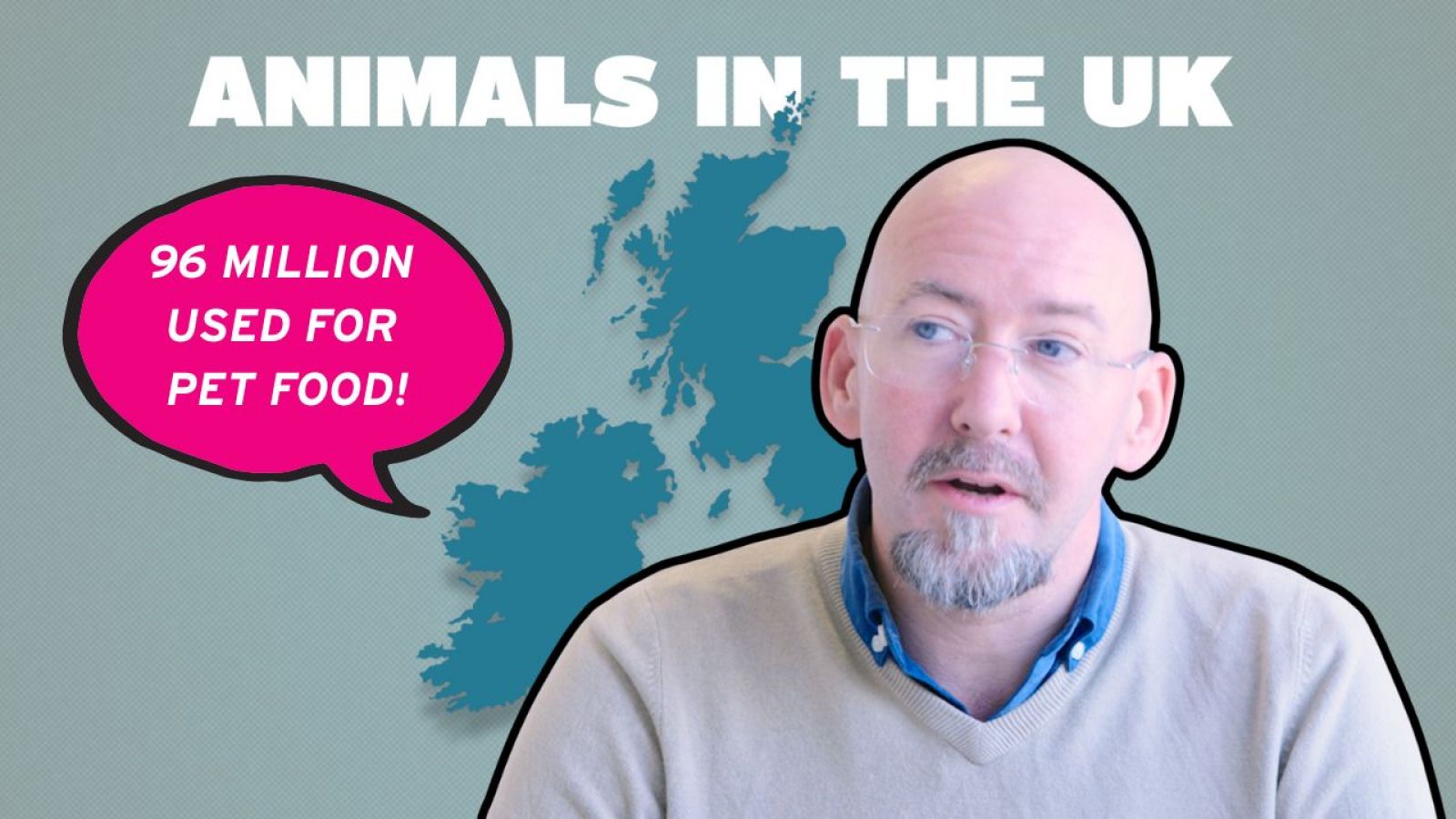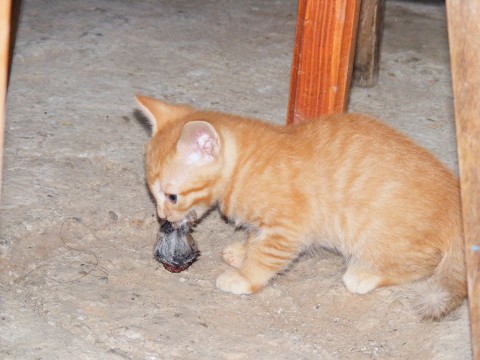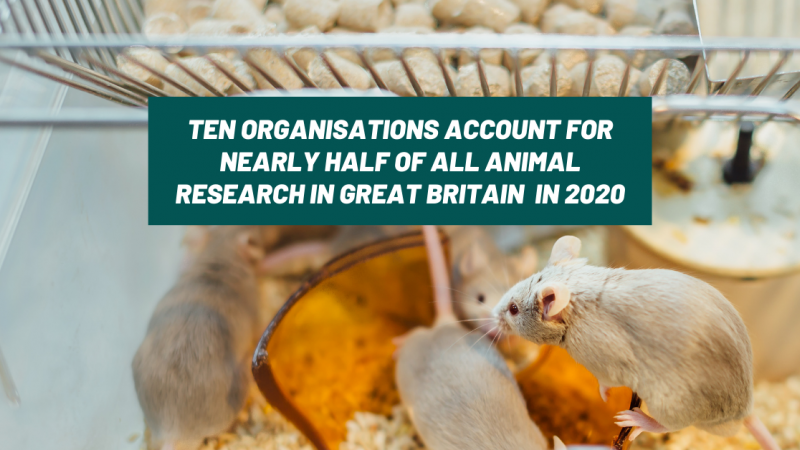
The New Scientist, in 2023, quoted the former UK Govt Deputy Chief Vet, Alick Simmons, on animal use in society. He said:
“We create arbitrary categories: farmed animals, wildlife, research animals, pets, “pests” and “game”. These are perpetuated through regulations providing wildly different levels of protection and care. At one extreme, the UK has the toughest regulatory environment in the world – for animals in research – and at the other are its laws ostensibly protecting wildlife, a dog’s dinner of outrageous omissions and egregious practice.”
He has a point. We live in a society where it’s of no consequence to eat a chicken without ethical review, but to use one for cancer research without ethical review can result in 51 weeks in jail or a £5,000 fine. One reason for this wildly incoherent value system is the distortion of public priorities by activists, and one purpose of UAR is to put it all back into perspective. To that end, we have been researching how various animals are used in society. The numbers we have revealed are jaw-dropping.
Many understand, because the UK research community is so open about it, that we use around 2.6 million animals (in mainly mild procedures) for scientific research each year. It is probably a little less well known, however, that we kill 1.2 billion animals every year for food. At first glance, that might not seem like such a big difference. For many of us the distinction between a million and a billion is a bit blurry. But in fact, the difference is vast. To illustrate the point, a million seconds is about two weeks, whereas a billion seconds is 32 years. In other words, the number of animals used in research is dwarfed by the number that we eat.
That’s not the whole story, however. The 1.2 billion number only includes land animals. On top of those, we eat another 1 billion fish, and 4.4. billion shellfish. And even that’s not all. With apologies to any pescatarians reading, to get 5 billion fish and shellfish, fishermen catch some 20 billion lifeforms in total, throwing back three quarters of what they net, most of which is dead or dies shortly thereafter. This includes small fish species, but also larger animals like porpoises.

Fishing bycatch includes larger species like porpoises. Image: ori2uru, CC BY 2.0, via Wikimedia Commons
And it is not as if all those animals are consumed by humans. Some estimate conclude that nine percent of the animals killed for food, are killed for pet food, mainly for dogs and cats. And don’t forget that while cats may need meat, or a very carefully-supplemented plant-based diet, dogs can easily thrive on largely plant-based diets.
So food for us and our pets constitutes, by a huge margin, the biggest social use of animals in the UK, but the second biggest killer might come as a surprise: domestic cats. Estimates vary, but some studies estimate that as many as 270 million animals are killed by pet cats in the UK each year.’ This is the “price” we choose to pay in animal death and suffering for the pleasure of cat ownership.

Domestic cats in the UK, between hunting and pet food, are estimated to kill 300 million animals per year.
Image: Emilian Robert Vicol from Com. Balanesti, Romania, CC BY 2.0, via Wikimedia Commons
Comparative uses of animals in UK society
We at UAR don’t take a view on whether that is a reasonable price, but we should at least admit that it is a choice we make as a society. There are other costs to animals that we habitually ignore or underestimate too, all of them far more exorbitant than animal research, such as the animals we exterminate as pests or run down on our roads. Realistically, there may not be much we can do to avoid the 20 million animals killed as pests in the UK each year, and it would probably cause more suffering overall to let pest species run rampant. Equally, it is hard to be too critical about the animals killed on our roads. People need to move about and do not generally set out to run over a rabbit. But if we don’t recognise that we have implicitly accepted these costs it can distort the debate about how animals are used in other ways, such as in research. Even if we count the “hidden” costs of animal research - the animals that are bred but not used in experiments (which might mean doubling the count of animals used to 6 or 7 million), the number still pales in comparison with almost any other societal use of animals, including pet ownership.
Is this just “whataboutism”? No. It is perspective.
Animal research in the UK is conducted under close scrutiny, tight regulation and a vast effort constantly being made to reduce the number of animals. We welcome the scrutiny and accept the criticism, but it is perfectly valid to demand that other much less regulated or entirely unregulated use of animals should receive similar attention and be viewed in the same context, especially when those uses are often for a much less noble cause than developing new medicines, saving human and animal lives and, ultimately, reducing suffering.
It's less whataboutism and more asking why we’re watching a fire safety training video while sitting in a burning room.
That doesn’t mean that we should focus less on research animals. We should be minimising animal use, finding alternatives, seeking improvements and maximising welfare. That’s what the humane use of animals means, and it’s a condition of public acceptance.
However, is it not also perhaps appropriate, before piling in on animal research, that people consider that the nation’s pets will eat as many animals in a fortnight than scientists will use in a whole year? These animals don’t die for cancer research, or to prevent a river being poisoned, or to create a pet medicine or to give us the foundational knowledge to survive the next pandemic, but so owners can enjoy having a cute pet. And while enjoying our pets, many of us will also contribute to a 3.2 million daily death toll of animals so that we can have a satisfying lunch. No ethical review required.
Perhaps hope for a rebalancing might come from the Animal Sentience Committee, which has already found that animal protections laws are going unenforced as we triple down on the scrutiny of lab animals, or the Animal Welfare Committee, which has reviewed the pros and cons of killing farmed pigs with nitrous oxide.
By all means scrutinise the mouse in the lab, but does it have to be at the expense of the porpoise in the harbour?
Last edited: 12 November 2025 13:32



